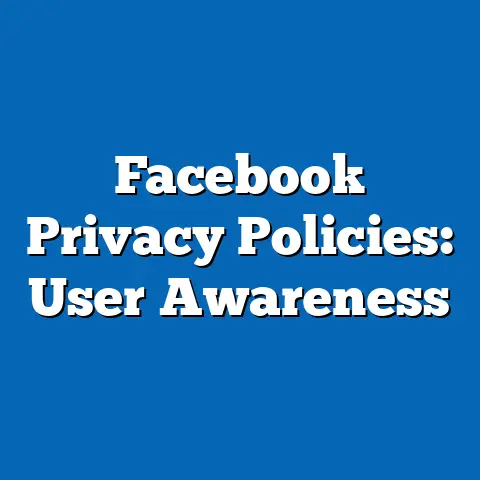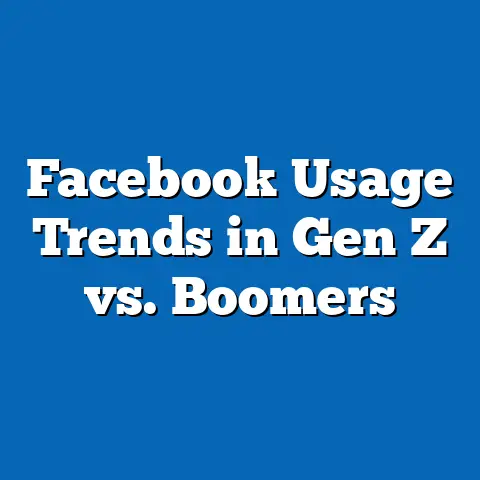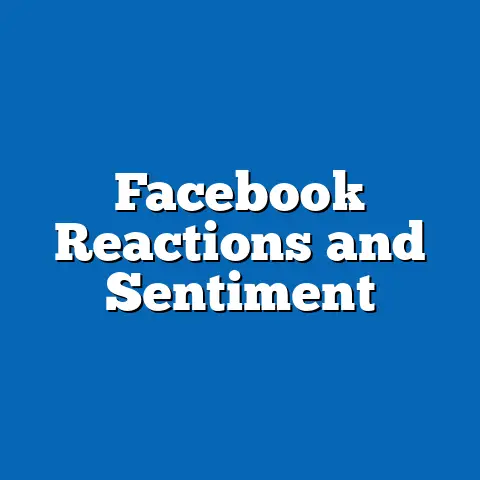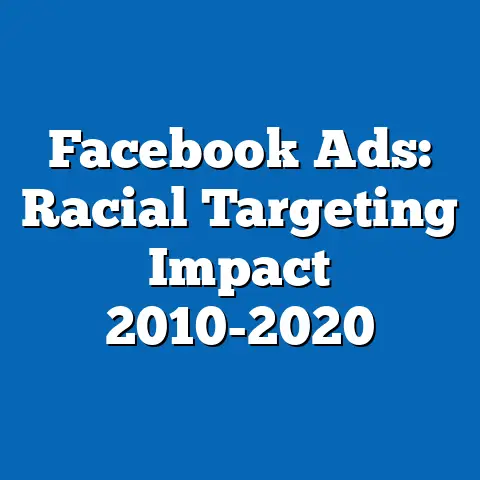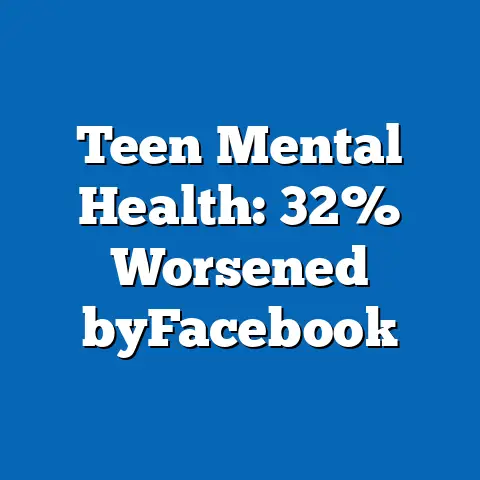Youth Exposure to Facebook Harm: Study Data
What if a platform designed to connect people across the globe became a silent catalyst for mental health struggles among the youngest of its users? Imagine a world where scrolling through endless feeds of curated perfection on Facebook—a platform once heralded as a revolutionary social tool—contributes to anxiety, depression, and diminished self-esteem in teens and preteens. This scenario is not a distant dystopia but a pressing reality that researchers, policymakers, and parents are grappling with today.
Youth exposure to social media, particularly platforms like Facebook, has become a focal point of concern as studies reveal alarming correlations between usage and mental health challenges. While Facebook (now under the Meta umbrella) was initially launched in 2004 as a college networking site, it quickly evolved into a global behemoth, shaping how generations communicate, socialize, and perceive themselves. This article delves into the data surrounding youth exposure to harm on Facebook, examining the defining characteristics of the platform’s impact, the historical context of its rise, and the broader societal implications for mental health, policy, and digital culture.
Defining Characteristics of Youth Exposure to Facebook Harm
Youth exposure to harm on Facebook encompasses a range of negative experiences, including cyberbullying, exposure to harmful content, and the psychological toll of social comparison. Studies indicate that adolescents aged 13-18 are particularly vulnerable due to their developmental stage, where identity formation and peer validation are paramount. The platform’s design—featuring likes, comments, and shares—often amplifies these vulnerabilities by creating a quantifiable measure of social worth.
Moreover, the algorithmic nature of content delivery on Facebook can expose young users to idealized images and lifestyles, fostering unrealistic expectations. A 2021 internal Meta report, leaked by whistleblower Frances Haugen, revealed that the company was aware of Instagram’s (a Meta-owned platform) negative impact on teen mental health, with similar concerns extending to Facebook. For instance, 32% of teen girls surveyed in the report felt worse about their bodies after using the platform, a trend that likely overlaps with Facebook usage given shared user demographics and features.
Unlike physical harm, the damage from social media is often insidious, manifesting as anxiety, depression, or diminished self-esteem over time. These effects are compounded by the addictive nature of the platform, where endless scrolling and notifications keep youth engaged for hours. The average teen spends approximately 3 hours daily on social media, according to a 2022 Pew Research Center study, with Facebook remaining a significant player despite competition from newer platforms like TikTok.
Historical Context: The Rise of Facebook and Its Impact on Youth
To understand the current crisis, we must trace Facebook’s evolution and its cultural footprint. Launched in 2004 by Mark Zuckerberg at Harvard University, Facebook initially targeted college students before expanding to high schools and eventually the general public by 2006. This rapid growth coincided with the broader digital revolution, as internet access became ubiquitous in households across developed nations.
By the late 2000s, Facebook had become a cultural juggernaut, redefining social interaction for Millennials (born 1981-1996) and setting the stage for Gen Z (born 1997-2012) to grow up as digital natives. The platform’s early appeal lay in its ability to foster connection, allowing users to share life updates, photos, and messages. However, as its user base swelled to over 2.9 billion monthly active users by 2023, so did its influence over societal norms and individual behavior.
The historical context of Facebook’s rise also intersects with significant technological shifts. The introduction of smartphones in the late 2000s, coupled with the platform’s mobile app, made social media an omnipresent force in daily life. For youth, this meant constant access to peer networks but also exposure to cyberbullying and trolling, phenomena that were less prevalent in pre-digital eras.
Additionally, the 2010s saw growing concerns about data privacy and mental health, with landmark events like the 2018 Cambridge Analytica scandal exposing how user data could be exploited. For young users, these events underscored the darker side of platforms like Facebook, where personal information could be weaponized, and curated feeds could distort reality. This historical backdrop provides critical insight into why youth exposure to harm on Facebook has become a pressing issue today.
Societal Implications: Mental Health, Policy, and Digital Culture
The societal implications of youth exposure to Facebook harm are multifaceted, spanning mental health crises, regulatory challenges, and shifts in digital culture. At the individual level, research consistently links excessive social media use with adverse mental health outcomes. A 2019 study published in The Lancet found that adolescents spending more than 3 hours daily on social media were at a higher risk of developing internalizing problems like anxiety and depression.
These findings are particularly concerning given the scale of Facebook’s reach among youth. While the platform requires users to be at least 13 years old, many younger children access it through loopholes or parental accounts, amplifying exposure risks. The American Psychological Association (APA) has noted that early adolescence is a critical period for brain development, making young users especially susceptible to the negative effects of social comparison and online harassment.
From a policy perspective, the data on Facebook harm has spurred calls for stricter regulation. In the United States, the 2021 whistleblower revelations prompted congressional hearings on Meta’s impact on teen mental health, with lawmakers advocating for enhanced child safety measures online. Similarly, the European Union’s Digital Services Act (DSA), enacted in 2022, imposes obligations on platforms like Facebook to mitigate risks to vulnerable users, including minors.
However, policy responses often lag behind technological advancements, leaving gaps in protection. For instance, while age verification systems are proposed, they are difficult to enforce, and content moderation struggles to keep pace with the volume of harmful material. These challenges highlight the need for a collaborative approach involving governments, tech companies, and educators to safeguard youth.
Culturally, Facebook has contributed to a hyper-connected yet paradoxically isolating digital landscape. For Gen Z, social media is a double-edged sword—offering community and self-expression but also perpetuating unrealistic standards and FOMO (fear of missing out). The platform’s role in shaping beauty ideals, lifestyle aspirations, and social hierarchies has long-term implications for how young people view themselves and others, often prioritizing external validation over intrinsic worth.
Study Data: Key Findings on Youth Exposure to Harm
A growing body of research provides quantitative and qualitative insights into how Facebook harms youth. One seminal study, conducted by the Royal Society for Public Health (RSPH) in 2017, surveyed 1,500 young people aged 14-24 in the UK and ranked social media platforms based on their impact on mental health. Facebook scored poorly, with users reporting higher levels of anxiety, sleep disruption, and feelings of inadequacy compared to platforms like YouTube.
More recent data from Meta’s internal research, leaked in 2021, offers a stark view of the platform’s effects. The studies, which focused on teens using both Instagram and Facebook, found that 13.5% of UK teen girls and 11.2% of US teen girls attributed suicidal thoughts to their social media use. While Instagram was the primary focus, overlapping user experiences suggest similar patterns on Facebook, especially given shared algorithmic and engagement-driven features.
Additionally, a 2023 survey by the Pew Research Center revealed that 59% of US teens aged 13-17 have experienced cyberbullying, with Facebook cited as a common platform for such incidents. This aligns with qualitative accounts from focus groups, where teens describe feeling pressured to maintain a “perfect” online persona, often at the expense of their mental well-being.
It’s worth noting that not all data points to uniformly negative outcomes. Some studies, such as a 2020 meta-analysis in Computers in Human Behavior, suggest that social media can foster social support and connection for marginalized youth, including LGBTQ+ teens who find community online. However, these benefits are often outweighed by risks when usage is excessive or unsupervised, underscoring the need for nuanced interpretations of the data.
Technological Factors: How Facebook’s Design Contributes to Harm
Facebook’s design and technological framework play a significant role in youth exposure to harm. The platform’s algorithm prioritizes engagement, often amplifying content that evokes strong emotional reactions—whether positive or negative. For young users, this can mean exposure to polarizing or harmful material, from body-shaming comments to viral challenges that encourage risky behavior.
The “like” and “comment” features, while seemingly innocuous, create a feedback loop where self-worth is tied to online validation. A 2018 study from the University of Pittsburgh found that teens who received fewer likes on their posts reported lower self-esteem, a phenomenon dubbed “social media rejection.” This is particularly acute for adolescents, whose brains are wired to seek peer approval during formative years.
Furthermore, the platform’s addictive nature—driven by notifications and infinite scrolling—keeps users engaged for longer periods, increasing exposure to potential harm. Neuroscientific research, such as a 2016 study in Psychological Science, shows that social media triggers dopamine release similar to gambling or drug use, making it hard for youth to disengage. This technological manipulation raises ethical questions about the responsibility of platforms like Facebook to prioritize user well-being over profit.
Economic and Social Factors Influencing Exposure
Beyond technology, economic and social factors shape how youth interact with Facebook and experience harm. Economically, access to smartphones and internet connectivity has made social media ubiquitous, even in lower-income households. A 2022 report by Common Sense Media found that 95% of US teens have access to a smartphone, democratizing exposure to platforms like Facebook but also widening the digital divide in terms of digital literacy and parental oversight.
Socially, the pressure to conform to peer norms drives much of the harmful behavior on Facebook. Teens often feel compelled to participate in trends or post content for visibility, even if it compromises their privacy or mental health. This is compounded by societal shifts toward individualism and self-presentation, where personal branding online becomes a marker of success or popularity.
Parental and educational influences also play a role. Many parents lack the digital literacy to monitor or guide their children’s social media use effectively, while schools struggle to integrate digital wellness into curricula. These gaps leave youth vulnerable to the unfiltered aspects of platforms like Facebook, where harmful interactions can go unchecked.
Cultural Shifts and Generational Differences
Culturally, the impact of Facebook on youth reflects broader generational shifts in how technology intersects with identity and socialization. Unlike Millennials, who adopted social media in late adolescence or early adulthood, Gen Z has grown up with platforms like Facebook as a constant presence. This immersion shapes their worldview, often prioritizing digital interactions over face-to-face connections.
However, it’s critical to avoid overgeneralizations. Not all Gen Z youth experience Facebook harm uniformly—cultural background, socioeconomic status, and personal resilience mediate individual outcomes. For instance, youth in collectivist cultures may face different pressures around social media use compared to those in individualistic societies, highlighting the diversity within generational cohorts.
Comparatively, older generations like Millennials and Gen X (born 1965-1980) tend to use Facebook for different purposes, such as networking or staying informed, and report lower rates of mental health impact. This discrepancy underscores how developmental stages interact with technology, with adolescents bearing the brunt of social media’s negative effects due to their heightened sensitivity to peer dynamics.
Implications for Society and the Workplace
The data on youth exposure to Facebook harm has far-reaching implications for society, particularly in mental health support and workplace dynamics. As today’s teens enter adulthood, the psychological effects of social media may manifest in higher rates of anxiety or burnout, necessitating robust mental health resources. Schools and universities are already seeing increased demand for counseling services, a trend likely to continue without intervention.
In the workplace, employers must adapt to a generation shaped by digital culture, where online validation may influence professional self-perception. Companies are beginning to offer digital wellness programs and social media training to mitigate these effects, recognizing that mental health directly impacts productivity and retention.
Moreover, the societal push for digital regulation could reshape tech industries, with platforms like Facebook facing pressure to redesign features for safety. This could lead to economic ripple effects, as companies balance compliance costs with innovation. The broader cultural implication is a potential reevaluation of technology’s role in daily life, prompting discussions about balance, mindfulness, and the ethics of digital engagement.
Nuances and Diversity Within the Data
While the data paints a concerning picture, it’s essential to acknowledge nuances and diversity in youth experiences with Facebook. Not all users report negative outcomes—some thrive on the platform, using it for activism, education, or creative expression. Factors like personality, support systems, and usage patterns mediate impact, with introverted teens or those with strong offline relationships often faring better.
Demographic differences also matter. Girls, for instance, are more likely to report body image issues tied to social media, per Meta’s 2021 internal data, while boys may face higher rates of cyberbullying related to gaming or social status. Racial and ethnic minorities may encounter unique challenges, such as online discrimination, adding layers of complexity to the harm experienced.
These variations remind us that generational studies must resist one-size-fits-all narratives. While trends exist, individual stories and contexts shape how youth navigate platforms like Facebook, calling for tailored interventions rather than blanket policies.
Forward-Looking Insights and Uncertainties
Looking ahead, the trajectory of youth exposure to Facebook harm remains uncertain, shaped by evolving technology, policy landscapes, and cultural attitudes. Emerging tools like artificial intelligence could improve content moderation, reducing exposure to harmful material, but they also risk reinforcing algorithmic biases if not carefully designed. Similarly, virtual reality platforms under Meta’s purview may introduce new dimensions of harm—or connection—for future generations.
Policy efforts will likely intensify, with global frameworks like the EU’s DSA setting precedents for accountability. However, enforcement challenges and tech industry pushback could delay meaningful change, leaving youth vulnerable in the interim. Education will play a critical role, with digital literacy programs potentially empowering young users to navigate social media more safely.
Culturally, there’s hope for a shift toward digital mindfulness, where youth and society at large prioritize mental health over online engagement. Yet, the addictive pull of platforms like Facebook, coupled with their economic dominance, suggests that change will be gradual. As researchers continue to study long-term impacts, one thing is clear: understanding and mitigating youth exposure to harm requires a collective effort, balancing innovation with empathy.
Conclusion
Youth exposure to harm on Facebook is a complex, multifaceted issue rooted in technological design, societal trends, and developmental vulnerabilities. From the platform’s historical rise to its current impact on mental health, the data reveals a pressing need for action across individual, institutional, and policy levels. While challenges abound, so do opportunities for meaningful change—whether through redesigned algorithms, stronger regulations, or enhanced digital literacy.
As we move forward, acknowledging the diversity of youth experiences and the uncertainties of technological evolution will be key. By fostering a nuanced understanding of Facebook’s role in young lives, society can work toward a future where connection doesn’t come at the cost of well-being. The question remains: will we act swiftly enough to protect the next generation, or will the digital age continue to outpace our capacity to care?

